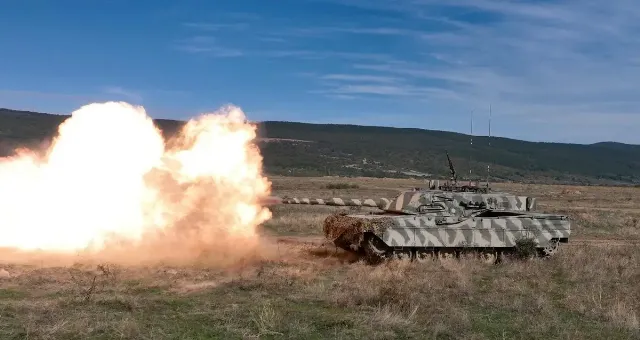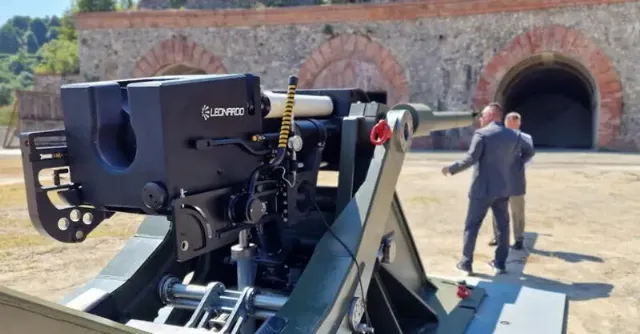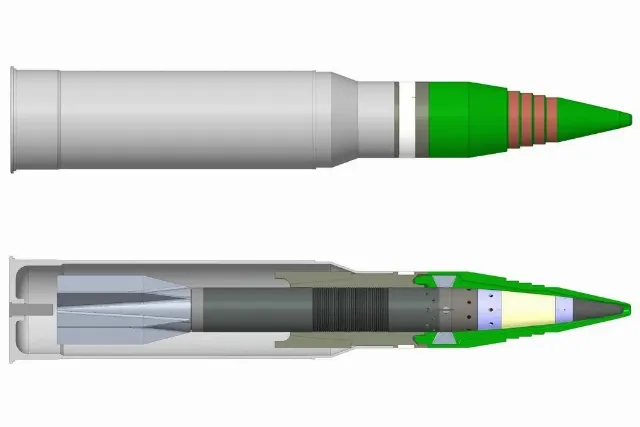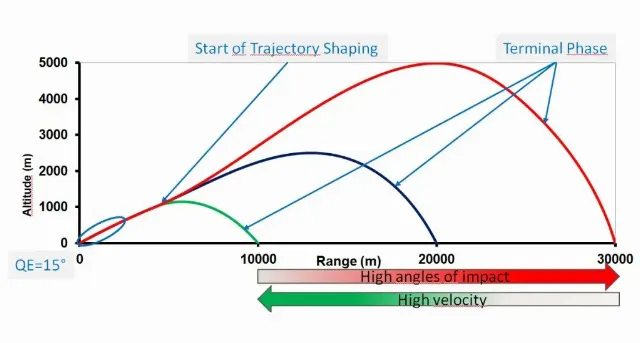 C1 Ariete of the Italian Army
C1 Ariete of the Italian ArmyOn the Ukrainian front, tanks are often used not as a means of breaking through or supporting infantry, but as self-propelled artillery, firing from closed positions. In this regard, Western developers decided to turn MBT into full-fledged self-propelled guns.
- it says in the EDR On-Line edition.
On July 16, Leonardo presented a new 120-mm L/55 high-pressure cannon and a 120-mm Vulcano guided munition at a test site in Italy.
 Leonardo 120/L55
Leonardo 120/L55The 120/L55 cannon was developed by the company in just 18 months at the La Spezia plant. Its trunk is longer, stronger and more durable. It is made of heavy-duty materials, chrome-plated from the inside. The new forging technology allows the breech to withstand higher pressure. The gun is equipped with an advanced shock absorption system (brakes and recuperator [meaning ejector and thermal protection]) to effectively dissipate recoil energy.
The cannon is compatible with all current and future types of NATO ammunition, including new high-strength armor-piercing sub-caliber projectiles (APFSDS) and ammunition with programmable detonation. The company declares its readiness to produce 800 guns per year.
 Leonardo 120/L55
Leonardo 120/L55However, the most interesting are the 120 mm Vulcano ammunition (created in addition to the Vulcano 76/127/155 mm range), which is planned to be completed within 3 years. The ideological basis of the developers was the use of excess energy from a tank shell. It is equipped with a warhead that uses residual kinetic energy and contains a small amount of explosives and damaging elements. The company emphasizes that the warhead will not be based on a cumulative charge.
- it is noted in the Italian edition of Difesa Online.
 Vulcano 120
Vulcano 120As explained by the developer, compared with artillery systems, which have a maximum elevation angle of +65 ° to +75 °, MBT is much lower and usually does not exceed 20 °. This, of course, limits the maximum firing range from closed positions.:
The company explained that when firing at long distances, the Vulcano 120 will attack from above, including armored targets. The ammunition by its nature has a small cross-section, small size and high speed, which makes it almost invisible even to modern and promising KAZ, which significantly reduces the likelihood of opposition from the enemy.
 Vulcano 120 flight path
Vulcano 120 flight pathThe projectile will be aimed at the target via GNSS [satellite communications], while it will be unencrypted, since the Galileo [EU navigation system] receiver with encryption is not yet available. In the absence of GNSS, guidance will be carried out in accordance with the ballistic tables. In both cases, as soon as the missile is in the target area, a semi-active laser seeker with external illumination is activated. At the second stage of development, it is planned to introduce a passive IR seeker, which will make the missile independent of external targeting.
- the conclusion is made in the publication Difesa Online.
